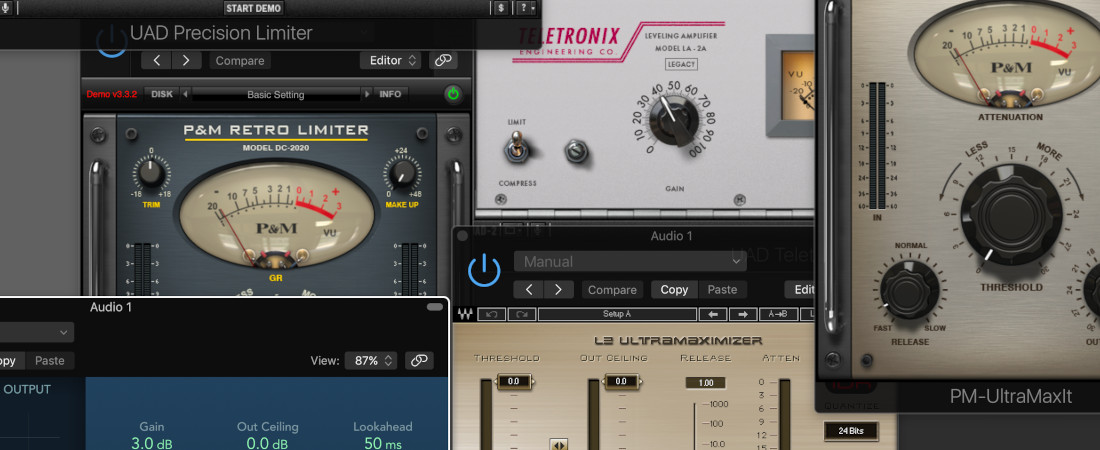HARDWARE VS. SOFTWARE
Hardware and software mixing effect processors are both used to manipulate and enhance audio signals, but they differ in terms of their physical nature and how they are implemented.
- Hardware Mixing Effect Processors: Hardware mixing effect processors are physical devices typically used in professional audio production settings. They are standalone units that receive audio signals, process them using various effects and controls, and output the processed audio. These devices often come in the form of rack-mounted units or compact desktop units.
Advantages of hardware mixing effect processors include:
- Dedicated hardware for processing, allowing for real-time, low-latency effects.
- Physical controls and interfaces that provide tactile feedback and intuitive operation.
- High-quality audio signal processing with dedicated processors and converters.
Disadvantages of hardware mixing effect processors include:
- Higher cost compared to software alternatives.
- Limited flexibility and upgradability, as changes and updates may require purchasing new hardware.
- Software Mixing Effect Processors: Software mixing effect processors, also known as plugins or virtual effects, are digital implementations of audio effects that run on a computer or a digital audio workstation (DAW). These effects can be installed and used within compatible software applications.
Advantages of software mixing effect processors include:
- Cost-effective compared to hardware units, as they can be purchased and used within existing software platforms.
- Flexible and customizable, with a wide range of effects and presets available.
- Easy integration within a digital audio workflow, allowing for seamless recall of settings and automation.
Disadvantages of software mixing effect processors include:
- Reliance on the processing power of the computer or DAW, which can introduce latency and performance limitations.
- Potential compatibility issues with different operating systems, software versions, or plugin formats.
- Lack of physical controls, requiring adjustments through a software interface.
In summary, hardware mixing effect processors are physical units that provide dedicated audio processing capabilities, while software mixing effect processors are digital plugins that run on a computer or DAW. Hardware processors offer tactile controls and high-quality processing but can be more expensive, while software processors are more cost-effective and flexible but depend on computer performance. The choice between hardware and software often depends on the specific requirements, budget, and workflow preferences of the user.
Using hardware equipment when mixing or mastering downside
While hardware effect processors offer various advantages in audio production, there are also some potential drawbacks to consider:
- Cost: Hardware effect processors can be significantly more expensive than their software counterparts. Acquiring a collection of high-quality hardware units can require a substantial investment, especially for professional-grade gear. This cost can be a limiting factor, particularly for home studio setups or musicians on a budget.
- Limited Flexibility: Hardware effect processors typically have fixed functionality and a specific set of controls. This limitation means that once you’ve chosen and invested in a hardware unit, you are generally locked into its capabilities. Updating or expanding your effects library may require purchasing additional hardware units. In contrast, software plugins offer greater flexibility, with a vast array of options and the ability to easily switch between different effects or settings.
- Physical Space and Portability: Hardware units take up physical space in your studio or workspace. Rack-mounted processors or larger devices can require significant room for installation and operation. Moreover, if you need to work on your projects in different locations or collaborate with others, transporting bulky hardware units can be cumbersome and inconvenient.
- Maintenance and Upkeep: Hardware effect processors require regular maintenance to ensure optimal performance. This includes cleaning, calibration, and potential repairs. The cost and effort involved in maintaining hardware units, as well as the potential for technical issues, can be a downside compared to the simplicity of software plugins that are generally easier to manage.
- Workflow Limitations: Using hardware processors may introduce certain workflow limitations. For example, hardware units typically require manual adjustments and settings, which can be time-consuming and less precise compared to the flexibility of software automation and recallable presets. Additionally, incorporating hardware into a digital audio workflow may require additional hardware interfaces, conversion, and routing setups.
- Dreadful Recall: Recalling a mix on an analog console can be an incredibly frustrating task, as many people have experienced firsthand. The process often involves spending a significant amount of time, sometimes an hour or more, meticulously readjusting every fader and knob to their correct positions, just to make a minor tweak to the background vocals. This annoyance is further compounded by the fact that most individuals do not have a team of assistants to handle this tedious work, forcing them to personally invest hours of valuable time into the process.
- Dependence on AD/DA Conversion: Top-notch AD/DA conversion is essential for achieving optimal sound quality, even with the finest analog equipment.Numerous producers rely on AD/DA conversion because recording analog sound directly can be precarious. For individuals lacking extensive hardware expertise, it’s effortless to commit errors such as excessive vocal compression or employing subpar EQ settings, which can turn the mixing process into a complete nightmare.
While you have the freedom to apply an abundance of processing during the mixing stage, removing processing that has already been applied to your signals becomes impossible.
Using software effects ( VST ) negative factors
While software effects offer several benefits in audio production, there are also some potential drawbacks to using them:
- Processing Power and Latency: Software effects rely on the processing power of your computer or digital audio workstation (DAW). Resource-intensive plugins can consume significant CPU usage, potentially causing latency or audio dropouts if your system is not adequately equipped. This limitation may restrict the number of plugins you can use simultaneously or require upgrading your hardware for smooth operation.
- Complexity and Learning Curve: Software effects often come with a wide range of parameters, controls, and options, which can make them complex to navigate and understand, especially for beginners. Mastering the intricacies of each plugin and their interactions may require time and effort to fully exploit their potential. This learning curve can be challenging for users seeking immediate results or those who prefer a more streamlined workflow.
- Software Stability and Compatibility: Software updates, operating system changes, or compatibility issues with different versions of plugins or DAWs can cause instability or conflicts. It’s not uncommon for certain plugins to behave differently or even become incompatible after software updates, potentially disrupting your mixing or mastering workflow. Ensuring software stability and compatibility requires regular maintenance, updates, and compatibility checks.
- User Interface Limitations: While software interfaces provide flexibility and customizable options, they may lack the tactile feel and immediacy of physical hardware controls. Adjusting parameters through a mouse or trackpad can be less intuitive and precise, making fine adjustments more challenging. Some users prefer the physicality of hardware units for a more hands-on and intuitive experience.
- System Reliance and Software Dependencies: Using software effects introduces a reliance on your computer or DAW system. If your computer crashes, experiences hardware failures, or encounters software conflicts, it can disrupt your mixing or mastering process. Additionally, software dependencies can arise if you need to move projects or collaborate with others who may not have access to the same plugins or versions, potentially complicating project sharing or compatibility.
- Piracy and License Management: Software effects are susceptible to piracy and unauthorized usage. Developers implement various licensing measures to protect their products, which can result in challenges related to activation, authorization, or managing licenses across multiple devices. Dealing with software licenses and potential piracy concerns can add administrative overhead and potential complications.
It’s important to consider these potential drawbacks and assess your specific needs, technical resources, and workflow preferences when deciding to use software effects in mixing or mastering. With careful planning, system optimization, and proper maintenance, these issues can be mitigated to ensure a smooth and productive audio production process.
Blog Articles
Mixing In Key Or Harmornic Mixing
Mixing in key refers to the practice of aligning the musical elements in a mix to ensure they are harmonically compatible. It involves considering the key or musical...
Using a reference track to improve your mixes
» Setting a benchmark » Developing a better ear » Improving your techniques » Avoid common mistakes Mixing is a complex process that involves balancing the different...
Using a limiter or clipper in music mixing and production
WHEN AND HOW TO USE A LIMITER MIXING MUSICAudio mixing and production involve a range of techniques and tools to shape the sound of a track. One essential tool in this...
Extras
Blog
Other News
Contact Page
About Us



